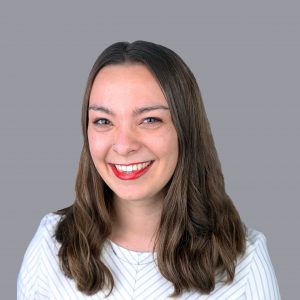LGBTQIA+ essentials for employers: what does LGBTQIA+ mean?

If you’re not part of the LGBTQIA+ community and want to learn more, whether for yourself or to be a better employer, it can be difficult to know where to begin.
In a recent survey with our colleagues, 41% said they are currently trying to educate themselves about LGBTQ+ issues and 19% said they haven’t started yet but intend to soon.
So, where to begin?
Well, a great place to start is to learn what the LGBTQIA+ community consists of and what are the correct terms to use.
The first lesson
The first concept to get to grips with to better understand the LGBTQIA+ community, and the issues they face, is the idea that gender and sexuality is not black and white. In fact, it’s a spectrum – hence the pride flag!
Unfortunately, in our society both gender and sexuality have very rigid definitions to many – that is, that men are attracted to women, and women to men, and that there are two distinct genders: man and woman. But history and a quick glimpse at the human race will tell you a very different story. In reality, people often don’t fall into these reductive categories, and have extremely varied experiences of sexuality and gender identity and expression.
Part of the LGBTQIA+ community’s mission is to encourage people to embrace all types of relationships and all forms of gender.
Some key terms
To better understand what we’re describing below, here are some key terms you’ll want to understand:
Sex: the different biological and physiological characteristics of males and females, such as reproductive organs, chromosomes and hormones.
Gender: the socially constructed characteristics of men, women, and non-binary people. This includes social norms, roles and relationships between each other.
Sexuality: this refers to a capacity for sexual feelings, often used to describe sexual orientation.
Sexual orientation: the gender or genders you’re attracted to.
Gender identity: this relates to an internal, deep-rooted understanding of who you are and what your gender is.
Gender expression: how you express your gender identity, for example in clothes, hair, makeup, behaviours, and mannerisms. It may or may not correspond to the gender someone identifies as.
The gender binary: this is the concept that there are only two genders, men and women, which is false.
Cisgender: someone who identifies as the sex they were assigned at birth. For example, a person who was born with female reproductive organs who identifies as a woman.
What do all the letters mean?
Getting to know our community members starts with understanding some key definitions. Here is what LGBTQIA+ actually stands for.
L for lesbian
A woman who is attracted to other women.
G for gay
Someone who is attracted to the same gender. Usually gay is used to describe men, but it can be used for women too.
B for bisexual and pansexual
Bisexual (or bi for short) is someone who’s attracted to more than one gender.
Pansexual (or pan) is someone who’s attracted to people regardless of their gender. The term was developed from bisexual to be a more inclusive and fluid label, since ‘bi’ in bisexual means ‘two’, which perpetuates the gender binary rather than encompassing all genders.
T for transgender (or trans)
Someone whose gender does not match the gender they were assigned to at birth. For example, a person may be born with male reproductive organs, and therefore was assigned male at birth, and was raised as a boy. However, when growing up they realise the label ‘man’ doesn’t relate who they actually are – a woman. She may then undergo a social transition in order to be recognised as the woman she is.
Transgender can also relate to someone who was assigned a gender at birth but don’t identify as a man or a woman, i.e. someone who is non-binary (see below for a definition).
(Please note ‘transexual’ is considered a slur and should not be used. If you’re worried about saying it wrong, simply use ‘trans’, which is a common abbreviation.)
Q for queer or questioning
Queer was developed as an umbrella term for someone who knows their gender identity isn’t cisgender and/or heterosexual, but is either still defining what terms they’d like to use or don’t want to give themselves a label. It’s also useful for someone who falls into various categories.
Although queer used to be an insult, it has been recontextualised in the community in recent years. Some older members of the community may still find it offensive, however.
Questioning is as it says on the tin: someone who isn’t fully sure of what their identity is yet and may be exploring who they are.
I for intersex
This is an umbrella term for a wide range of people who are born with sexual or reproductive organs that don’t fit the typical definitions of male or female, for example they might have both reproductive organs.
Legally an intersex person has to be assigned a sex at birth and are often given surgery to alter their bodies to match that category. When they grow up their gender identity might not suit the sex selected for them.
(Please note ‘hermaphrodite’ is an outdated label for this group of people which is considered a slur.)
A for asexual and aromantic
Asexual (or ace) refers to someone who experiences little to no sexual attraction. There is also the term ‘demisexual’ (or demi) in this category which is where someone only feels sexual attraction when they have a deep connection with someone, e.g. in the context of a loving relationship.
Graysexual refers to the ‘grey area’ between being sexual and asexual.
Aromantic (or aro) is someone who feels no romantic connection to people. This is different to being asexual in that an aromantic person may feel sexual attraction to people, they just don’t have romantic feelings alongside it.
+ for everything else
The + symbol is used to capture everyone else in the community that isn’t mentioned and can include allies too.
It includes:
Gender fluid or gender queer: someone whose gender identity or expression isn’t set in stone and can change with time. They might identify more as a man one day, a woman the next, both, or neither.
Non-binary: the umbrella term for gender identities that fall outside of ‘man and woman’ including agender people. They may prefer using the pronouns they/them, though this is specific to the person.
Agender: someone who does not identify as having a particular gender. Their gender is neutral or undefined.
Polyamorous: someone who’s open to multiple romantic and/or sexual relationships at the same time.
Two-spirit: a term used by Native Americans to describe a third gender (sometimes included in the acronym as LGBTQIA2S+).
Interesting fact: cultures recognising a third gender, or gender fluidity, crops up throughout history, including in ancient Indian, Arabic, Mayan, Inca, and Inuit civilisations.
What can I call everyone altogether?
This was a whistle-stop tour of the LGBTQIA+ community and some key terms to use. Now you might be wondering how to refer to the whole group in a considerate way.
Although LGBT is the traditional way to refer to the community, this is a bit reductive as it doesn’t factor in the wide range of gender identities. As we’ve been doing in this article, LGBTQIA+ is the current most common way to refer to the community in an inclusive way. This is because it encompasses most of the key groups.
If you’re looking for a shortened version, you can use LGBTQ+. The Q for queer helps capture the portion of the population who fall into multiple categories or disregard labels altogether. And the plus is your secret weapon to inclusivity as it recognises the wide range of people who aren’t referenced in those initial five letters.
In summary
As you can see above, the LGBTQIA+ community is so varied that it’s difficult to slap a one-size-fits-all label on any group or sub-group.
There has always been a lot of discourse in the community on what these labels really mean, and many terms have had to be redefined to be more inclusive. New terms are popping up all the time to better define subsets of the community who feel the current labels don’t best describe how they identify. And some people want to discard labels altogether to just be free to be who they are without the burden of defining themselves for the sake of categorisation.
That’s why it is so important to treat every person as an individual – both in and out of the LGBTQIA+ community. Listen to how they define themselves and if in doubt, ask how they’d like to be addressed. Learning about LGBTQIA+ inclusion isn’t something you can ever ‘finish’, and even members of the community need to keep learning to support their peers.
Keep an eye out as we’ll soon be sharing an article on the issues LGBTQIA+ people face in the UK and around the world.




